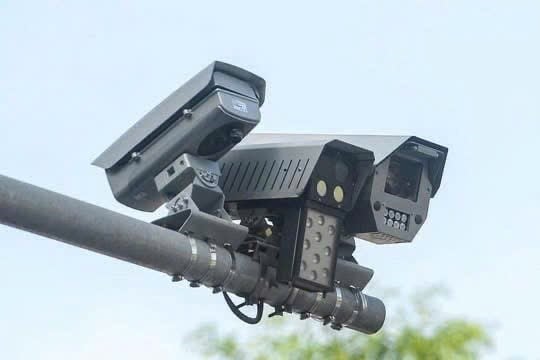 Society
Society


|
| The Ministry of Defence in late August deployed two mobile oxygen production sites at 175 Military Medical Hospital in HCM City. — VNA/VNS Photo Xuân Khu |
HÀ NỘI — The Ministry of Health held an online training conference on Monday on a project to enhance the supply and use of medical oxygen for facilities treating COVID-19 patients.
The conference saw participation from more than 1,000 locations in 63 provinces and cities.
The conference aims to prepare, respond proactively, promptly and effectively in terms of medical oxygen for emergencies and for the treatment of COVID-19 patients.
Speaking at the conference, Deputy Minister of Health Trần Văn Thuấn emphasised that investing in the medical oxygen supply system would be an investment for the long term.
"The investment, expansion of production scale, supply network and technical infrastructure of medical oxygen at medical examination and treatment facilities is not only for the COVID-19 pandemic but also for the future," he said.
In some southern provinces and cities, the number of new cases of COVID-19 along with the current number of cases and the need for medical treatment for other diseases has resulted in an increasing demand for medical oxygen. The percentage of COVID-19 patients who have the need for oxygen ranging from mild levels such as oxygen masks, oxygen therapy glasses and high flow oxygen to severe levels such as non-invasive and invasive ventilation, ECMO, accounting for about 9.5 per cent of the total cases.
According to Nguyễn Minh Tuấn, Director of the Department of Medical Equipment and Construction, Ministry of Health, in Việt Nam, the supply capacity of oxygen across the country is about 1,200 tonnes of liquid oxygen per day and can be increased by 50 per cent to 100 per cent as needed.
Regarding the status of medical oxygen technical infrastructure in medical facilities, it basically meets routine medical care, but there are still some limitations when the number of COVID-19 patients increases.
In fact, many medical facilities at the district level do not have a central oxygen system; lack oxygen containers (such as bottles, flasks, tanks); and do not back up the number of containers when they have to be rotated, or used for support for home treatment and emergency transportation. Establishments in remote areas often have difficulty accessing oxygen supplies, while the ability to coordinate and mobilise oxygen has not been prompt in intensive situations like natural disasters (storms, floods, power outages, etc.) or the pandemic.
To increase the production, supply and ensure medical oxygen for the treatment of COVID-19 patients, on September 7, 2021, the Minister of Health issued Decision No. 4308/QD-BYT on strengthening the capacity to supply medical oxygen for facilities treating COVID-19 patients. The main objective of the project is to guide localities to proactively develop plans and organise a close connection between supply and demand in order to exploit resources for producing medical oxygen in the country; prepare medical oxygen infrastructure to treat COVID-19 patients according to different pandemic scenarios.
Deputy Minister Trần Văn Thuấn pointed out four groups of solutions that provinces and cities need to conduct urgently.
First, reviewing and evaluating the current status of medical oxygen technical infrastructure at medical facilities at all levels and developing a plan, based on the guidance of the Ministry of Health on medical oxygen demand at all levels, to improve the technical infrastructure of medical oxygen systems at facilities treating COVID-19 patients.
Secondly, localities should assess the ability to produce oxygen, the network of oxygen suppliers, to plan and expand the scale of oxygen production and supply to ensure that demand can be met.
Thirdly, provinces and cities should implement effective connection and coordination among stakeholders: producers, suppliers, transporters and users of oxygen to ensure that emergency needs are met without interruption in various situations.
The deputy minister requested that localities assign a vice chairman of the people's committees to be the head of the department, the leader of the Department of Health acting as deputy permanent member of the unit in charge of medical oxygen coordination. Localities should also strengthen IT application in the management and coordination of medical oxygen, and at the same time properly control the price of medical oxygen in the locality to ensure that the price is not a barrier when the demand for oxygen increases.
Localities are asked to continue to implement the motto "four on the spot", proactively prepare, be ready and promptly respond to medical oxygen needs in emergencies and COVID-19 treatment: planning the procurement of medical oxygen containers and other necessary supplies and equipment; simultaneously, continuously expanding training for doctors, nurses, medical staff at all levels on medical oxygen therapies in treatment suitable to all levels. — VNS